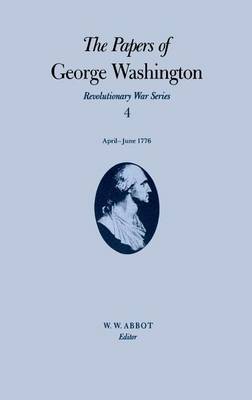The Papers of George Washington
3 total works
The Papers of George Washington v.11; Revolutionary War Series;August-October 1777
by George Washington
Volume 11 of the Revolutionary War Series contains correspondence, orders, and other documents covering one of the most militarily active periods of the war. The volume begins with Washington's army camped about twenty miles north of Philadelphia. Having planned to march toward the Hudson River to engage General John Burgoyne's northern expedition, Washington had to change course when scouts sighted the British fleet carrying General William Howe's army in the Chesapeake Bay on 22 August. Three days later Washington's troops were at Wilmington, Delaware, when Howe's army began landing at the head of the bay. Having personally led reconnaissance parties quite close to British lines, Washington then positioned his army on Brandywine Creek in Pennsylvania to halt Howe's subsequent march to Philadelphia, but on 11 September the Americans suffered a nearly disastrous defeat. After another American attempt to stop the advancing British was frustrated by a fierce rainstorm, Howe skillfully outmaneuvered Washington before turning to Philadelphia, taking possession on 26 September as Congress fled the city.
Washington still hoped to reverse Howe's apparent victory, but his attack on British positions at Germantown, Pennsylvania, on 4 October was hampered by his complicated plan of attack, battlefield confusion, and stout British resistance, which combined to defeat the Americans. No longer able to come to grips with Howe's main army, Washington turned his attention to blocking passage of the Delaware River to prevent supplies from reaching the British in Philadelphia. American hopes of recapturing Philadelphia looked dim.
Washington was rarely isolated from the world during his eventful life. His diary for 1751-52 relates a voyage to Barbados when he was nineteen. The next two accounts concern the early phases of the French and Indian War, in which Washington commanded a Virginia regiment. By the 1760s when Washington's diaries resume, he considered himself retired from public life, but George III was on the British throne and in the American colonies the process of unrest was beginning that would ultimately place Washington in command of a revolutionary army.
Even as he traveled to Philadelphia in 1787 to chair the Constitutional Convention, however, and later as president, Washington's first love remained his plantation, Mount Vernon. In his diary, he religiously recorded the changing methods of farming he employed there and the pleasures of riding and hunting. Rich in material from this private sphere, The Diaries of George Washington offer historians and anyone interested in Washington a closer view of the first president in this bicentennial year of his death.

